Nature's most devoted mothers
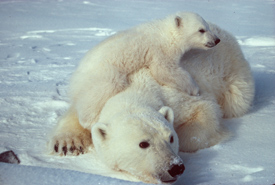
Polar bear mother with cub (Photo by Scott Schliebe/Wikimedia Commons)
Every day, millions of mothers around the world work tirelessly to protect and provide for their young. This Mother’s Day, learn about 10 mothers in the wild and the neat ways they take care of their offspring.
Refrigerator mothers
Polar bear mothers in the Arctic raise their offspring in an environment where the average temperature is -40 Celsius. During the chilliest winter months, pregnant females dig dens underground to give birth between November and January, and stay in their dens as the cubs nurse. After roughly six months, the entire family comes out of the den so that the mother can hunt seals once again.
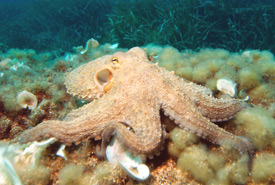
Octopus (Photo by Albert Kok, Wikimedia Commons)
Meet the real octomom
Depending on the species, female octopuses lay between 50,000 and 200,000 eggs, which require about 40 days to develop. During this time, mothers protect their eggs from predators and oxygenate the eggs by blowing water currents over them. They don’t leave their dens, even to eat, and sometimes resort to consuming one of their own arms to survive! After the eggs have hatched, the mothers often die. Researchers once observed an octopus staying with her eggs for 53 months, without leaving to eat — a record among egg-laying animals.
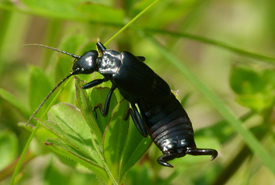
Adult earwig (Photo by L. Shyamal/Wikimedia Commons)
Eerie mommies
Earwig moms keep their eggs warm, protect them from predators and clean them to prevent fungus from forming. Once the offspring are ready to hatch, mothers assist them in breaking out of their shells. They continue protecting their offspring for a few more months, until they have molted again.
Mouthy mothers
Alligator mothers lay 20 to 60 eggs, which they guard until they hatch. When the offspring are ready to emerge from their eggs, moms assist them by breaking the egg shells with their mouths. They then carry all of their offspring to the water in their mouths. Sometimes, offspring will hitch rides on their mothers’ backs or heads. For approximately one year, offspring remain with their mothers, then it’s “see you later, alligator.”
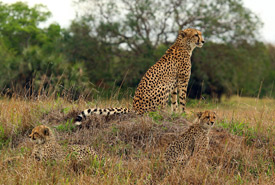
Cheetah and cubs (Photo by Charles J. Sharp)
Marathon moms
Cheetah mothers typically give birth to between four and six cubs, and relocate them every four days to stop predators from tracking their scent. Over the course of almost two full years, moms teach their offspring hunting and predator-evading skills.
Talk about being coddled
Orangutan moms spend most of their lives in trees, constructing new nests from foliage and branches each night for their offspring. In fact, a female orangutan typically makes more than 30,000 nests throughout her life!
During an infant’s first four months of life, mother-infant contact is non-stop. In their first two years, infants completely depend on their moms for food and getting from point A to point B. An orangutan mom plays the role of both mother and teacher, instructing her offspring where and when to forage for fruit, how to construct nests for sleeping and how to eat. Orangutan moms do not wean their infants until they are six or seven years old — the longest nursing period of any animal.
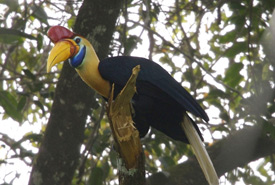
Red-knobbed hornbill (Photo by Lip Kee Yap/Wikimedia Commons)
Birdie mum mum
To prevent predators from entering their tree-hole nests and eating their eggs, red-knobbed hornbill mothers make their nest entrances narrower by using their own feces. Mothers then remain in their holes for two months, not leaving even to eat.
Polar empresses
After laying their eggs, female emperor penguins transfer them to their male partners and then trek for 80 kilometres to the ocean in order to catch fish and squid, a journey that takes about two months. Eventually, they return to the site where the eggs hatched to regurgitate food into their chicks’ mouths. The fathers then transfer the chicks to the mothers, who keep them warm and secure with their brood pouches.
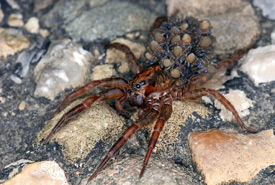
Wolf spider carrying eggs (Photo by Valerius Geng/Wikimedia Commons)
Babies got back
Female wolf spiders attach egg sacs to their bodies and carry them. After hatching, the mothers let the offspring remain on their backs until they reach an age when they can look after themselves.
It’s cloaca-lickin’ good
To feed their larvae, caecilian (a type of amphibian that resembles a worm) mothers allow them to lick a substance they secrete from their cloacae (body openings). They also allow their sharp-toothed offspring to eat their nutritious skin, which they regenerate every three days so they can continue to feed their larvae.


